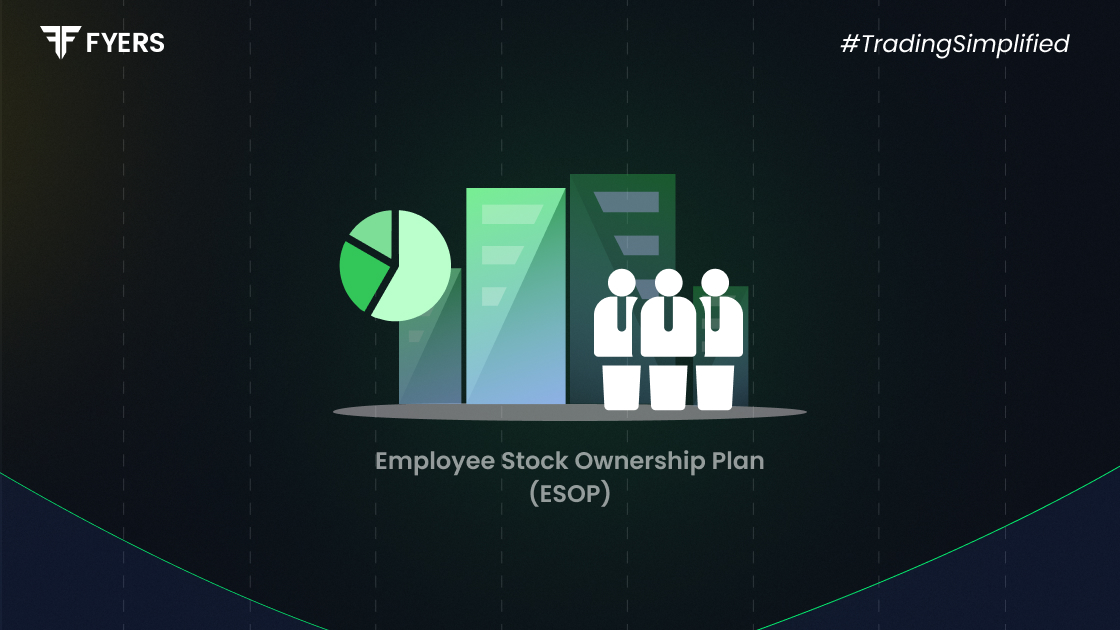

 10 Jul, 2025
10 Jul, 2025
 4 mins read
4 mins read

In today’s competitive job market, companies are looking beyond salaries to attract and retain top talent. One of the most popular tools in this arsenal is the Employee Stock Ownership Plan, commonly known as ESOP. Especially popular among Indian startups and tech firms, ESOPs align employee interests with company growth by offering part-ownership.
In this blog, we'll explain what is ESOP, how it works, its benefits for employees and employers, taxation in India, and provide a practical ESOP example to clarify the concept.
An Employee Stock Ownership Plan (ESOP) is a structured benefit scheme through which companies offer their employees the opportunity to own shares in the organisation. These shares are often provided at a discounted rate, making them a valuable part of the employee’s compensation package.
In India, ESOPs are especially popular among startups and private companies. They serve as a powerful wealth-sharing tool, encouraging employees to think like stakeholders rather than just workers. When employees own a piece of the company, they tend to feel more invested in its growth and long-term success.
Here’s a simplified step-by-step of how ESOPs work:
Grant: The company grants a fixed number of stock options to the employee.
Vesting Period: Employees gain the right to exercise these shares over time - commonly 3–4 years.
Exercise: Once vested, the employee can buy the shares at the pre-decided exercise price.
Sale: The employee can hold or sell the shares after purchase, often during an IPO or company buyback.
ESOPs are:
A non-cash compensation tool
Often used for employee retention
A method for employee wealth creation
Initial Cost to Employee: Typically limited to the exercise price (often much lower than the market price).
Distribution: After vesting, shares can be exercised and either held or sold depending on the company's policies.
Some companies offer flexible payment mechanisms or deduct the exercise amount at the time of sale.
Here’s why employees value ESOPs:
Wealth Creation: Earn from the company’s growth.
Sense of Ownership: Drives better performance and motivation.
Loyalty Boost: Long-term benefits encourage employees to stay longer.
Tax Deferral: Taxes apply only at the time of exercise and sale, not during grant.
Companies offering ESOPs also benefit:
Employee Retention: Reduces attrition with multi-year vesting.
Cash Flow Friendly: No need for high cash-based payouts.
Higher Productivity: Ownership leads to accountability.
Talent Attraction: Helps startups compete with big salary packages.
ESOP taxation in India occurs in two phases:
The difference between Fair Market Value (FMV) and exercise price is taxed as a perquisite under "Salary".
Employer deducts TDS accordingly.
Capital Gains Tax applies:
Short-Term Capital Gains (STCG) if sold within 24 months: Taxed as per slab.
Long-Term Capital Gains (LTCG) if held over 24 months: Taxed at 10% (above ₹1 lakh) without indexation.
Tip: Always consult a tax advisor before exercising your ESOPs to plan better.
Let’s break down how ESOPs work using a simple example:
Company ABC grants 1,000 ESOPs to Raj at ₹100/share.
After 4 years, Raj vests 100% of the shares.
On the date of exercise, FMV = ₹300.
Raj pays ₹1,00,000 (₹100 × 1,000 shares).
Taxable Salary Income = ₹2,00,000 (₹300 – ₹100 × 1,000).
One year later, Raj sells at ₹500/share → ₹5,00,000 total.
Capital Gain = ₹2,00,000, taxed as LTCG if held for over 24 months.
The Employee Stock Ownership Plan (ESOP) is not just a compensation strategy - it's a powerful tool for employee motivation, company loyalty, and wealth creation. For employees, ESOPs are a golden opportunity to benefit from a company's growth. For companies, ESOPs offer a scalable, cash-efficient way to build a high-performance team.
But ESOPs come with complexities - vesting periods, exercise pricing, and taxation rules must be carefully understood. When used correctly, ESOPs can create long-term wins for both employers and employees.
ESOP stands for Employee Stock Ownership Plan.
While used interchangeably, ESOPs typically refer to structured ownership plans under company policy, whereas stock options specifically allow employees to buy shares at a future date and price.
Employees receive shares after vesting and exercising their options.
Tax complexity
Value depends on company performance
No returns until a liquidity event
Restrictions on selling shares in private companies
Calculate your Net P&L after deducting all the charges like Tax, Brokerage, etc.
Find your required margin.
Calculate the average price you paid for a stock and determine your total cost.
Estimate your investment growth. Calculate potential returns on one-time investments.
Forecast your investment returns. Understand potential growth with regular contributions.